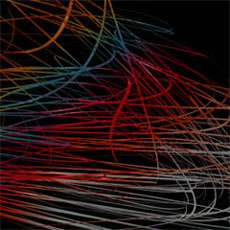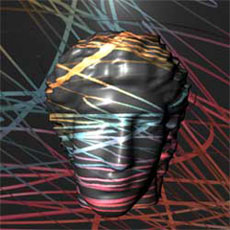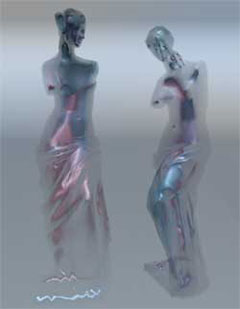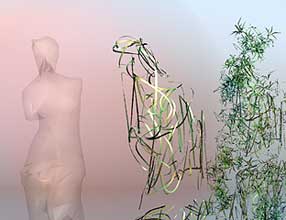When I learned about the painting of Paul Cezanne, I was impressed by the way he seemed to think of the relationship between objects and space. Objects were not isolated from each other as he established a relationship between them by what he called “the passage shape”. The passage shape being an abstract shape which combine elements of two adjacent objects. The contours of the objects are varied by this abstract shape creating transitions from one to the other. (Even empty space is an object.) This idea is most noticeable in his unfinished paintings. The painting became a two dimensional abstract visual field. As visual structure his paintings have a truly remarkable clarity and stability.
As a former painter I try to use aspects of the concept of transition between space and object in my animation. Generally in all of my work. However, within the domain of three dimensional computer graphics and especially with time it is indeed a challenge. Sometimes I succeed.
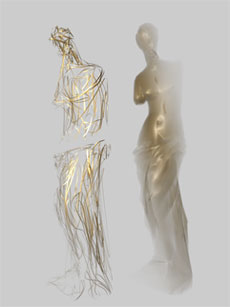
I try not to think of isolated objects existing in a 3d world space. Animation in particular is not a matter of arranging objects in space over time. The issues are more complex.
I’m inclined to think of space as having energy and a material substance. Space has density and as a substance , perhaps particles, it is comprised of layers of transparency. This notion helps me to establish a relationship between objects and what we call space. Transparency in particular helps me to achieve a transition between 3d objects and space. For me, such a concept of space as a material with
layers of density helps to establish the transitions required for a unified visual field.
Chuck Csuri, Painter/Animator

